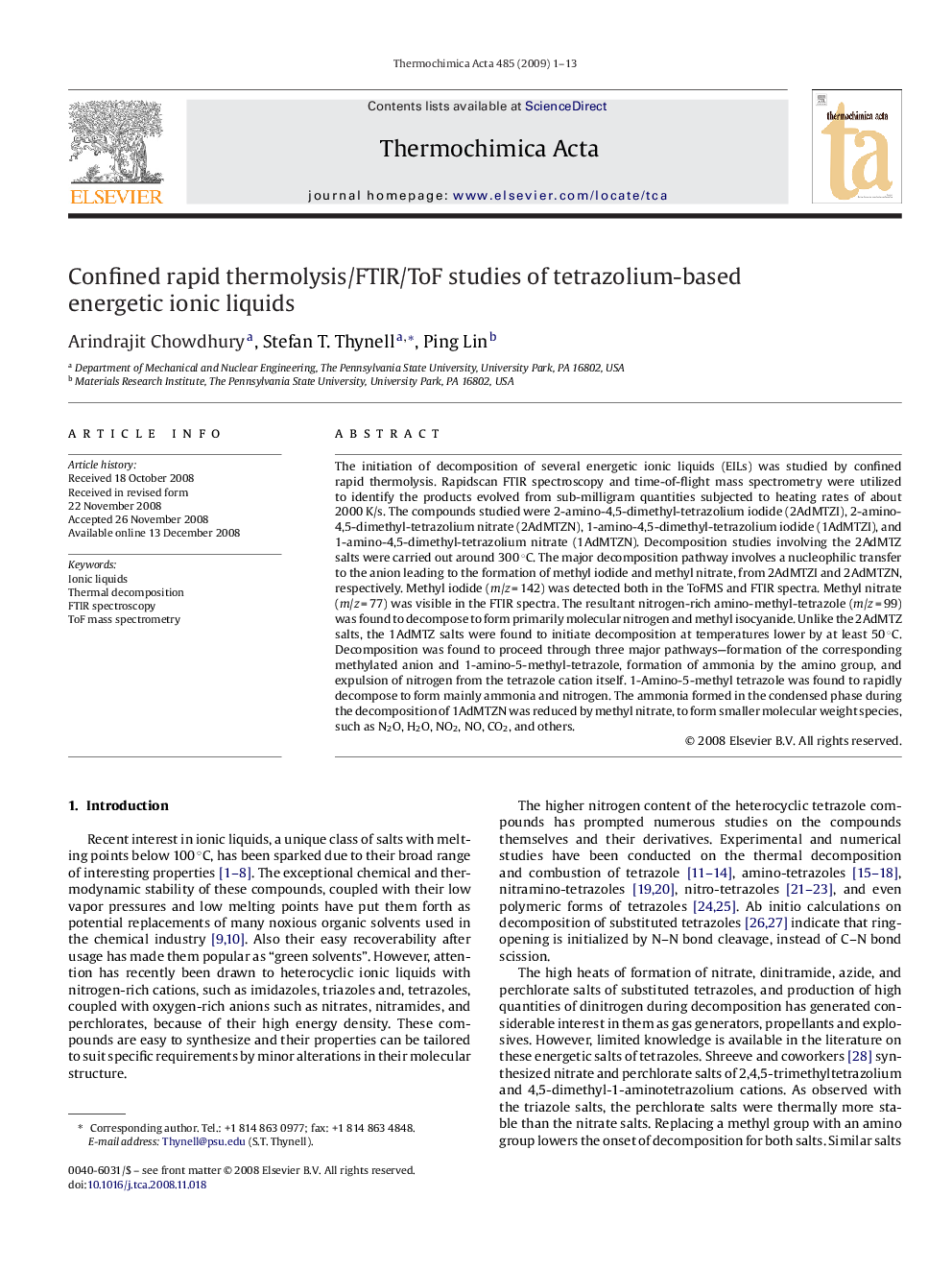| کد مقاله | کد نشریه | سال انتشار | مقاله انگلیسی | نسخه تمام متن |
|---|---|---|---|---|
| 675384 | 1459597 | 2009 | 13 صفحه PDF | دانلود رایگان |

The initiation of decomposition of several energetic ionic liquids (EILs) was studied by confined rapid thermolysis. Rapidscan FTIR spectroscopy and time-of-flight mass spectrometry were utilized to identify the products evolved from sub-milligram quantities subjected to heating rates of about 2000 K/s. The compounds studied were 2-amino-4,5-dimethyl-tetrazolium iodide (2AdMTZI), 2-amino-4,5-dimethyl-tetrazolium nitrate (2AdMTZN), 1-amino-4,5-dimethyl-tetrazolium iodide (1AdMTZI), and 1-amino-4,5-dimethyl-tetrazolium nitrate (1AdMTZN). Decomposition studies involving the 2AdMTZ salts were carried out around 300 °C. The major decomposition pathway involves a nucleophilic transfer to the anion leading to the formation of methyl iodide and methyl nitrate, from 2AdMTZI and 2AdMTZN, respectively. Methyl iodide (m/z = 142) was detected both in the ToFMS and FTIR spectra. Methyl nitrate (m/z = 77) was visible in the FTIR spectra. The resultant nitrogen-rich amino-methyl-tetrazole (m/z = 99) was found to decompose to form primarily molecular nitrogen and methyl isocyanide. Unlike the 2AdMTZ salts, the 1AdMTZ salts were found to initiate decomposition at temperatures lower by at least 50 °C. Decomposition was found to proceed through three major pathways—formation of the corresponding methylated anion and 1-amino-5-methyl-tetrazole, formation of ammonia by the amino group, and expulsion of nitrogen from the tetrazole cation itself. 1-Amino-5-methyl tetrazole was found to rapidly decompose to form mainly ammonia and nitrogen. The ammonia formed in the condensed phase during the decomposition of 1AdMTZN was reduced by methyl nitrate, to form smaller molecular weight species, such as N2O, H2O, NO2, NO, CO2, and others.
Journal: Thermochimica Acta - Volume 485, Issues 1–2, 10 March 2009, Pages 1–13